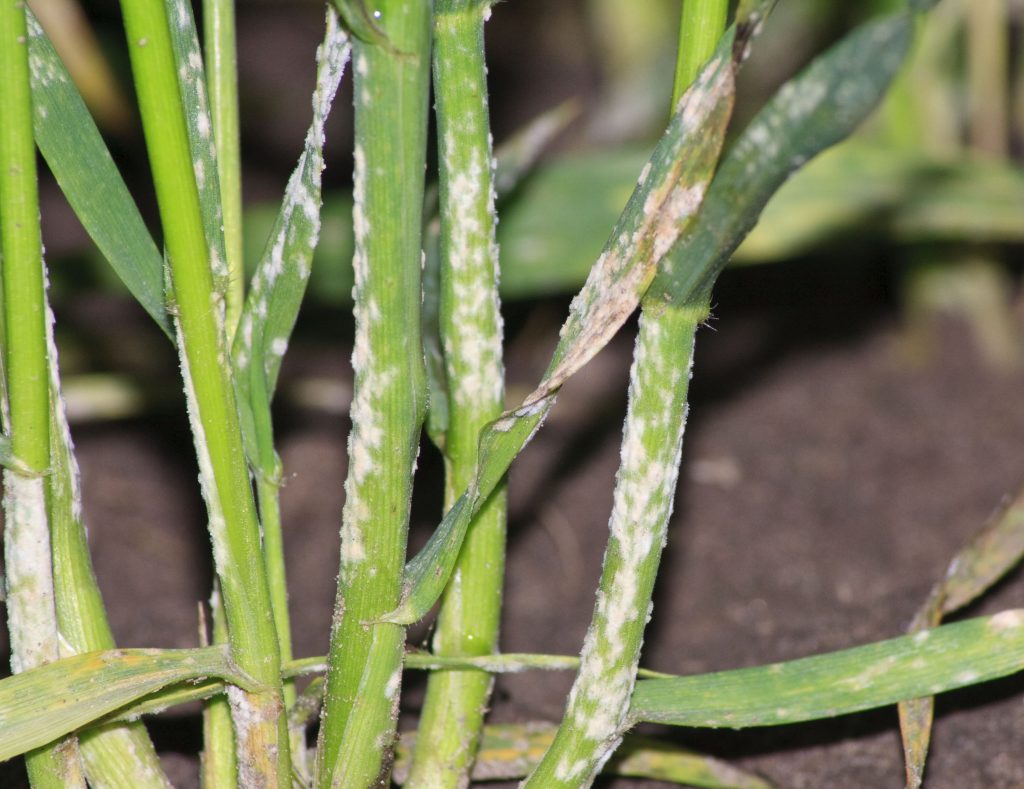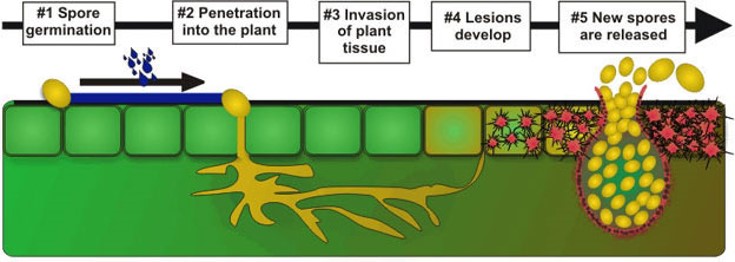Learning Outcomes:
- To explain where chemical control fits in and “Integrated Pest Control” strategy
- To understand how fungi infect crops
- To understand the different modes of action of fungicides.
Fungicide Chemistry
How fungicides work
Fungicide Performance Data
The AHDB fungicide performance work provides high-quality, independent information on the relative efficacy of fungicides against key diseases in wheat, barley and oilseed rape.
Go to AHDB Website page
Crop Health & Protection – Chemical Control A Guide for Level 3 Apprentices

In agriculture, keeping crops healthy is a big job. One way to do this is by using Integrated Pest Management (IPM). IPM means using a mix of methods to manage pests, including fungi. For more about IPM go to Crop Protection Page
In this post, we’ll explain:
- Where chemical control fits into IPM
- How fungi infect crops
- The different ways fungicides (chemical controls) work
What Is Integrated Pest Management (IPM)?
IPM is a smart way to control pests by combining several strategies. These include:
- Cultural Practices: Crop rotation, proper watering, and sanitation.
- Biological Controls: Using natural enemies of pests, like beneficial insects.
- Mechanical Controls: Physical methods such as traps or barriers.
- Chemical Controls: Using chemicals like fungicides when necessary.
The goal is to use chemicals only when needed, keeping the environment safe and reducing the risk of pests becoming resistant.
Videos on fungi and fungicides
Where Does Chemical Control Fit In?
Chemical control, or the use of fungicides, is an important part of IPM. Here’s why:
- Quick Action: Fungicides can reduce pest populations fast when there is an outbreak.
- Support Other Methods: They work best when combined with other controls, like crop rotation or beneficial insects.
- Delay Resistance: Using different fungicides with various modes of action helps prevent fungi from becoming resistant.
Remember, the idea is not to rely solely on chemicals but to use them wisely alongside other methods.
How Do Fungi Infect Crops?

Understanding the infection process helps us know when and how to use fungicides. Here’s a step-by-step look:
- Spore Dispersal: Fungi produce tiny spores that travel in the air or water.
- Germination: Under the right conditions (like warm and humid weather), spores start to grow.
- Penetration: The growing fungus sends out structures that break into the plant tissue.
- Colonization: The fungus spreads inside the plant, causing damage such as spots, lesions, or wilting.
- Spread: New spores are produced and spread to infect more plants.
Early detection and quick action are essential to prevent a small problem from becoming a major issue.
The Different Modes of Action of Fungicides
Fungicides work in different ways to stop fungi. Here are the main types:
1. Protectant (Contact) Fungicides
- How They Work: They form a barrier on the plant’s surface to stop spores from germinating.
- When to Use: Apply these before the infection starts as a preventative measure.
2. Systemic (Curative) Fungicides
- How They Work: These are absorbed by the plant and travel within its tissues, stopping the fungus after it has entered.
- When to Use: Useful when early signs of infection are seen.
3. Fungicides with Specific Targets
- Cell Wall Synthesis Inhibitors: Stop the fungus from building its cell wall, leading to its collapse.
- Respiration Inhibitors: Cut off the fungus’s energy supply by disrupting its breathing process.
- Mitotic Inhibitors: Prevent the fungus from dividing and growing.
4. Managing Resistance
- Rotate Fungicides: Use different types of fungicides to prevent the fungus from becoming resistant to one particular chemical.
- Combine with Other IPM Methods: Use cultural and biological controls along with chemicals to lower the risk of resistance.
Bringing It All Together
Understanding how chemical control fits into IPM is key to managing crop diseases effectively. By:
- Monitoring your crops carefully
- Using fungicides only when necessary
- Rotating chemicals to avoid resistance
you can protect your crops while keeping the environment and your practices sustainable.
Final Thoughts
Chemical control is an important tool in the farmer’s toolkit. When used as part of an Integrated Pest Management strategy, fungicides help control diseases caused by fungi, keeping crops healthy and productive. Remember to always use chemicals responsibly and as part of a broader pest management plan.
Below is presentation which gives more details about “Crop Chemical Health & Protection?”

